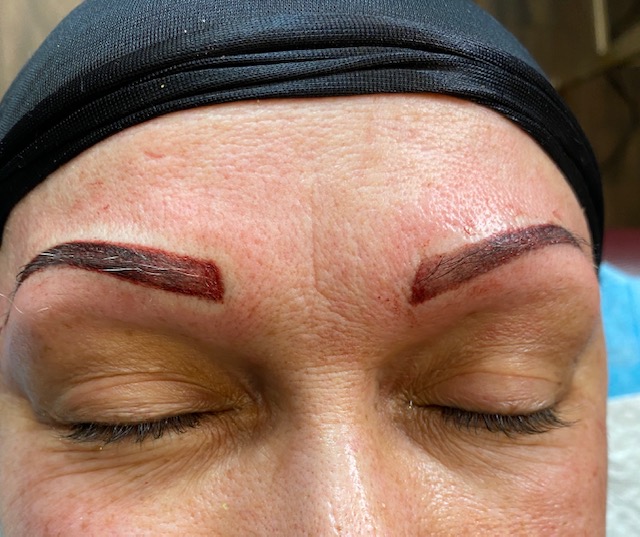
Saline Tattoo Removal: A Gentle Approach to Ink Erasure
In the ever-evolving world of tattoo removal, various methods have emerged, each promising effective results without compromising safety. One such method gaining popularity is saline tattoo removal. In this article, we will explore the intricacies of saline tattoo removal, its advantages, the science behind the process, and everything you need to know before considering this gentle approach to ink erasure.
How Saline Tattoo Removal Process works?
Saline tattoo removal involves the use of a saline solution to break down and lift tattoo pigments from the skin. Unlike traditional methods such as laser removal, which can be harsh on the skin, saline removal offers a gentler alternative. The process is suitable for various ink colors and skin types, making it a versatile choice for those seeking tattoo removal.
Advantages of Saline Tattoo Removal
Minimal Pain and Discomfort
One of the primary advantages of saline tattoo removal is the minimal pain and discomfort associated with the procedure. Unlike laser removal, which can be abrasive, saline solution gently interacts with the tattoo ink, resulting in a less painful experience for the individual undergoing the process.
Suitable for All Skin Types
Saline tattoo removal is considered safe for all skin types. Whether you have sensitive or darker skin, the procedure is less likely to cause adverse effects. This inclusivity makes saline removal an attractive option for a broader range of individuals.
Safety Considerations
The saline solution used in the removal process is generally safe for the skin and has fewer associated risks compared to other methods. Professionals carefully administer the solution, minimizing the chances of allergic reactions or long-term skin damage.
The Science Behind Saline Tattoo Removal
The effectiveness of saline tattoo removal lies in the science of osmosis. The saline solution penetrates the skin, causing the tattoo ink to disperse gradually. This process is more natural and less aggressive than the heat-based mechanisms employed by laser removal. Additionally, saline removal is considered safer for the surrounding skin tissues.
Comparing saline tattoo removal with laser removal reveals the gentler nature of the former. While laser removal uses intense light and heat to break down pigments, saline removal relies on the body’s natural processes to eliminate ink particles, reducing the risk of scarring and discomfort.
Before Getting a Saline Tattoo Removal
Before undergoing saline tattoo removal, it is crucial to schedule a consultation with a qualified professional. During this consultation, the practitioner will assess the tattoo’s size, colors, and your overall health to determine the most suitable approach. Additionally, following pre-treatment instructions, such as avoiding sun exposure and certain medications, helps prepare your skin for the procedure.
The Saline Tattoo Removal Procedure
Step-by-Step Guide
- Skin Preparation: The practitioner cleans and prepares the skin for the saline removal process.
- Saline Application: The saline solution is applied to the tattooed area using a specialized tool.
- Ink Dispersal: Over the following weeks, the saline solution causes the tattoo ink to disperse gradually.
- Follow-Up Sessions (if necessary): Depending on the tattoo’s size and complexity, multiple sessions may be required for complete removal.
Expected Duration and Results
The duration of the saline tattoo removal process varies based on factors such as tattoo size, ink colors, and individual skin characteristics. While some tattoos may require only a few sessions, others may take several months to achieve optimal results. Patience is key, and individuals should be prepared for a gradual fading of the tattoo.
Recovery and Aftercare
Following the saline tattoo removal procedure, it is essential to follow specific aftercare instructions to promote optimal healing and minimize potential side effects. Common aftercare practices include:
- Keeping the treated area clean and dry
- Avoiding direct sunlight and tanning beds
- Applying recommended ointments or creams
- Avoiding activities that may irritate the treated skin
Understanding and adhering to these aftercare guidelines contribute to a smoother recovery process.
Comparing Saline Removal with Other Methods
Cost Comparison
Saline tattoo removal is often more cost-effective than laser removal. The number of sessions required, the size of the tattoo, and the professional’s fees contribute to the overall cost. Individuals seeking budget-friendly yet effective removal may find saline removal a suitable option.
Effectiveness and Potential Risks
While saline tattoo removal is generally effective, its success depends on various factors, including the tattoo’s age, size, and ink composition. Additionally, individuals may experience mild side effects such as redness, swelling, or temporary discoloration. These effects are typically short-lived and part of the natural healing process.
Case Studies and Success Stories
Real-life examples of successful saline tattoo removal provide valuable insights into the procedure’s effectiveness. Many individuals have shared their experiences of achieving desired results with minimal discomfort. Testimonials from satisfied clients emphasize the importance of choosing a skilled and experienced professional for the best outcomes.


